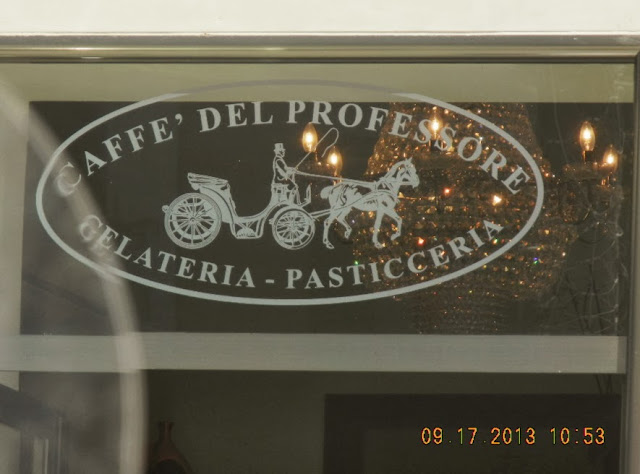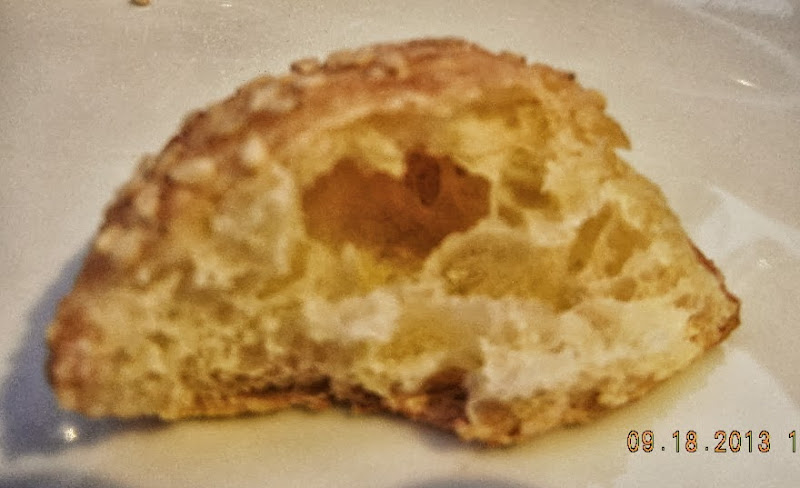Figs ripening in Rome, September 8, 2013.
For me, the first snow in Anchorage either means crawling under the covers and spending the afternoon in deep denial, or looking for an antidote, usually involving decadently rich chocolate concoctions. Caramel-cherry-fig brownies captured my attention with this weekend's snowfall, and proved worthy of every delicious moment of anticipation during the making and baking. No dried cherries? Use all figs. The only thing I’d do differently is try to remember the vinegar, which would have added just a lingering note of brightness.
Anchorage snow, November 11, 2013.
Ingredients for fig-caramel brownies.
Fig/caramel sauce
- 8 ounces dried black mission figs, chopped
- 3/4 - 7/8 cup prepared caramel sauce
- 1 1/2 teaspoons balsamic vinegar
Mix together, set aside.
Brownies ingredients
- 8 ounces bittersweet (not unsweetened) or semisweet chocolate, coarsely chopped (Guittard wafers work well)
- 9 tablespoons (1 stick plus 1 tablespoon) butter
- 1/4 cup heavy whipping cream
- 1 cup packed brown sugar, and 1/4 cup white sugar (or use all white sugar)
- 3 large eggs
- Two teaspoons vanilla extract
- 1 1/4 cups all purpose flour
- 1/4 teaspoon baking soda
- 1/4 teaspoon baking powder
- 1/4 teaspoon salt
- 6 ounces bittersweet or semisweet chocolate chips (Ghiradelli makes good chips)
Preparation
Preheat oven to 350 degrees. Butter and flour 13x9x2 inch metal baking pan (I lined the pan with parchment paper).
Chocolate mixture
Stir 8 ounces chocolate wafers (or coarsely chopped chocolate), butter, and cream in medium saucepan over medium heat until melted and smooth. Cool to lukewarm, about 15 minutes.
Sugar, eggs, vanilla
Whisk sugars, eggs, and vanilla in large bowl until well blended, about 1 minute.
Combining brownie ingredients
∙ Whisk chocolate mixture into sugar, vanilla and egg mixture.
∙ Sift flour, baking soda, baking powder, and salt over, then stir to blend.
∙ Mix in chocolate chips.
∙ Spread batter evenly in the pan.
Adding fig caramel
Drop the fig/caramel mixture onto batter by tablespoonfuls. Use the tip of small knife to swirl the fig/caramel mix slightly into batter.
Baking and cooling
Bake brownies until the caramel on the top bubbles, the top of the batter is dry, and a toothpick inserted near center comes out with moist crumbs attached, about 30 - 35 minutes. Cool brownies in pan on rack.
Serving
Cut into one-inch squares. Eat as is, or top with whipped cream, ice cream, or rum sauce -- anything suitably over the top. They might be good with a lemon or raspberry sauce or sorbet too.
Brownies, glazed with buttery caramel and rich with figs.
Adapted from a recipe for brownie with caramel, fig and dried cherries jam. http://www.tastebook.com/recipes/2268796-BROWNIES-WITH-CARAMEL-FIG-and-DRIED-CHERRY-JAM?full_recipe=true. Source: Lulu Petite in San Francisco













































